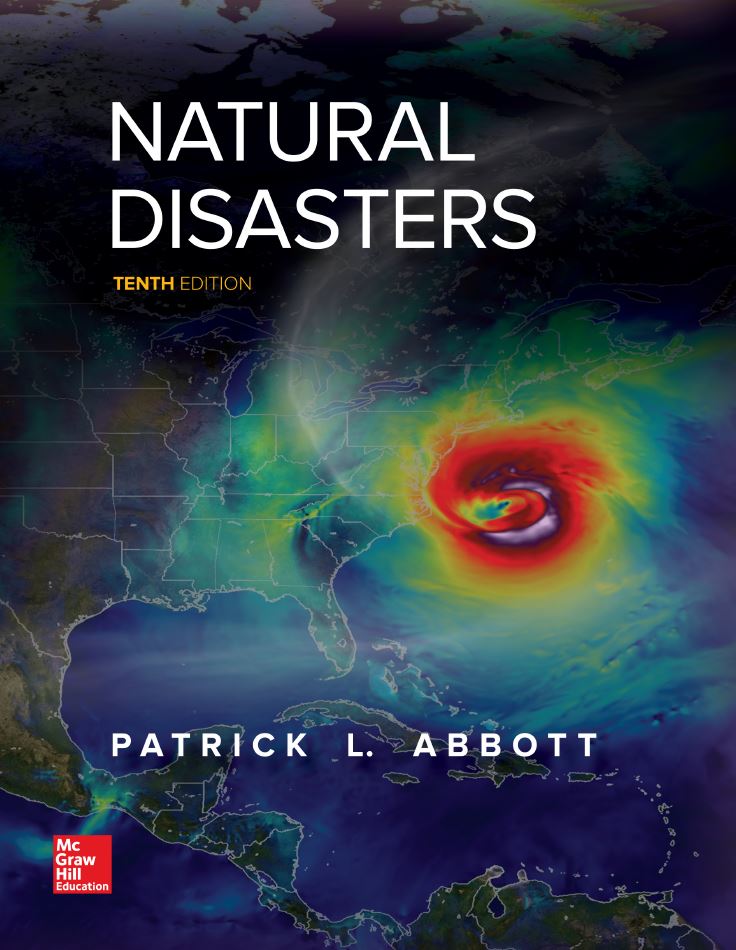Description
Test Bank For Natural Disasters 10Th Edition Patrick Leon Abbott
Chapter 06 Test Bank: Volcanic Eruptions: Plate Tectonics and Magmas KEY
Multiple Choice Questions
1. The most famous of all volcanoes probably is Vesuvius, and the most famous of its eruptions are those of 79 ce, which buried the cities of ____________.
A. Pompeii and Herculaneum
B. Naples and Rome
C. Naples and Milano
D. Petra and Florence
E. Florence and Pisa
Accessibility: Keyboard Navigation
Bloom’s Level: 1. Remember
Chapter: 06
Gradable: automatic
Section: Plate-Tectonic Setting of Volcanoes
Topic: Plate-Tectonic Setting of Volcanoes
2. Over _________ of volcanism is associated with the edges of tectonic plates.
A. 90%
B. 80%
C. 70%
D. 60%
E. 50%
Accessibility: Keyboard Navigation
Bloom’s Level: 1. Remember
Chapter: 06
Gradable: automatic
Section: Plate-Tectonic Setting of Volcanoes
Topic: Plate-Tectonic Setting of Volcanoes
3. Over _________ of Earth’s magma extruded through volcanism takes place at the oceanic spreading centers.
A. 90%
B. 80%
C. 70%
D. 60%
E. 50%
Accessibility: Keyboard Navigation
Bloom’s Level: 1. Remember
Chapter: 06
Gradable: automatic
Section: Plate-Tectonic Setting of Volcanoes
Topic: Plate-Tectonic Setting of Volcanoes
4. Spreading centers are an ideal location for volcanism because ______________.
A. they sit above the high-temperature asthenosphere
B. the asthenosphere rock has low percentages of SiO2
C. the oceanic plates pull apart causing hot asthenosphere rock to rise and undergo decompression melting to form magma that continues to rise
D. All of these choices are correct.
Accessibility: Keyboard Navigation
Bloom’s Level: 1. Remember
Chapter: 06
Gradable: automatic
Section: Plate-Tectonic Setting of Volcanoes
Topic: Plate-Tectonic Setting of Volcanoes
5. Silicon and oxygen link up to form the silicon-oxygen ______________.
A. dihedron
B. trihedron
C. tetrahedron
D. hexahedron
E. dodecahedron
Accessibility: Keyboard Navigation
Bloom’s Level: 1. Remember
Chapter: 06
Gradable: automatic
Section: Chemical Composition of Magmas
Topic: Chemical Composition of Magmas
6. The typical trend in a rising plume of subduction-zone magma is to increase the ____________.
A. percentage of SiO2
B. viscosity
C. explosive potential of the magma by holding in the gases more tightly
D. All of these choices are correct.
Accessibility: Keyboard Navigation
Bloom’s Level: 1. Remember
Chapter: 06
Gradable: automatic
Section: Chemical Composition of Magmas
Topic: Chemical Composition of Magmas
7. The viscosity of magma is lowered by __________.
A. increasing temperature
B. decreasing crystal content
C. decreasing SiO2 content
D. All of these choices are correct.
Accessibility: Keyboard Navigation
Bloom’s Level: 1. Remember
Chapter: 06
Gradable: automatic
Section: Viscosity, Temperature, and Water Content of Magmas
Topic: Viscosity, Temperature, and Water Content of Magmas
8. In magma, __________ is the most abundant dissolved gas.
A. water vapor (H2O)
B. carbon dioxide (CO2)
C. sulfur dioxide (SO2)
D. hydrogen sulfide (H2S)
E. carbon monoxide (CO)
Accessibility: Keyboard Navigation
Bloom’s Level: 1. Remember
Chapter: 06
Gradable: automatic
Section: Viscosity, Temperature, and Water Content of Magmas
Topic: Viscosity, Temperature, and Water Content of Magmas
9. Rock may melt by _______________.
A. lowering the pressure on it
B. raising its temperature
C. increasing its water content
D. All of these choices are correct.
Accessibility: Keyboard Navigation
Bloom’s Level: 1. Remember
Chapter: 06
Gradable: automatic
Section: How a Volcano Erupts
Topic: How a Volcano Erupts
10. The presence of water ________ the melting point of rock.
A. raises
B. lowers
C. does not change
D. may raise or may lower
Accessibility: Keyboard Navigation
Bloom’s Level: 1. Remember
Chapter: 06
Gradable: automatic
Section: Plate-Tectonic Setting of Volcanoes
Topic: Plate-Tectonic Setting of Volcanoes
11. Mineral growth in magmas at the surface with temperatures around 1,000 to 1,200°C occurs in the following way
A. Iron and magnesium will link up with aluminum and the silicon-oxygen tetrahedron as magma temperature decreases to sequentially form four distinct and discontinuous families of minerals—olivine, pyroxene, amphibole, and biotite mica.
B. Calcium will combine with aluminum and the silicon-oxygen tetrahedron to begin forming the plagioclase feldspar family, a continuous and gradational series of minerals.
C. Both of these are correct.
D. None of these choices are correct.
Accessibility: Keyboard Navigation
Bloom’s Level: 1. Remember
Chapter: 06
Gradable: automatic
Section: Viscosity, Temperature, and Water Content of Magmas
Topic: Viscosity, Temperature, and Water Content of Magmas
12. Why does the magma from some volcanoes flow smoothly and relatively peacefully, while the magma from other volcanoes blasts forth violently and deals death over wide areas?
A. differences in the chemical and mineral makeup of magmas
B. variations in the temperature, water and gas content, and viscosity of magmas
C. different geographic positions with respect to hot spots and edges of tectonic plates
D. All of these choices are correct.
Accessibility: Keyboard Navigation
Bloom’s Level: 1. Remember
Chapter: 06
Gradable: automatic
Section: Viscosity, Temperature, and Water Content of Magmas





Be the first to review “Test Bank For Natural Disasters 10Th Edition Patrick Leon Abbott”